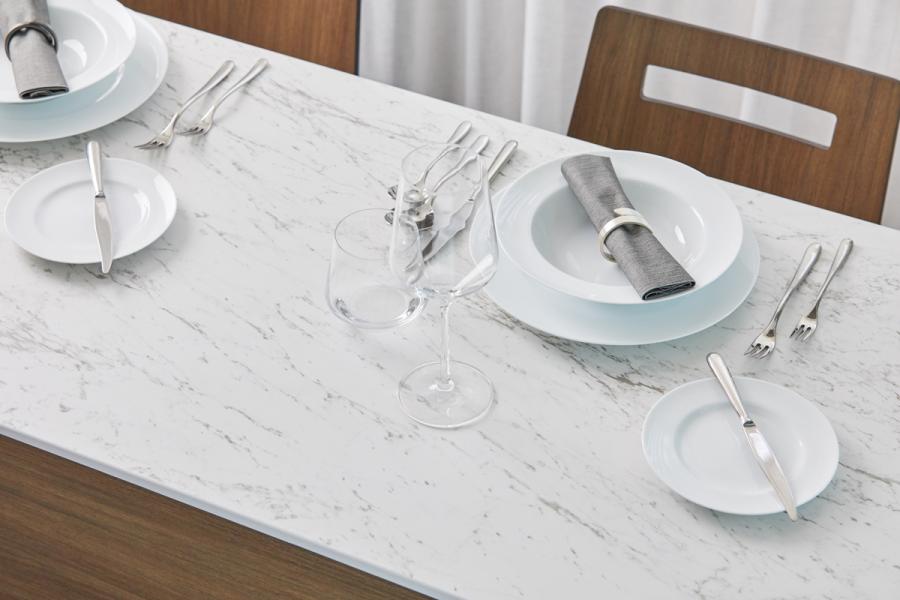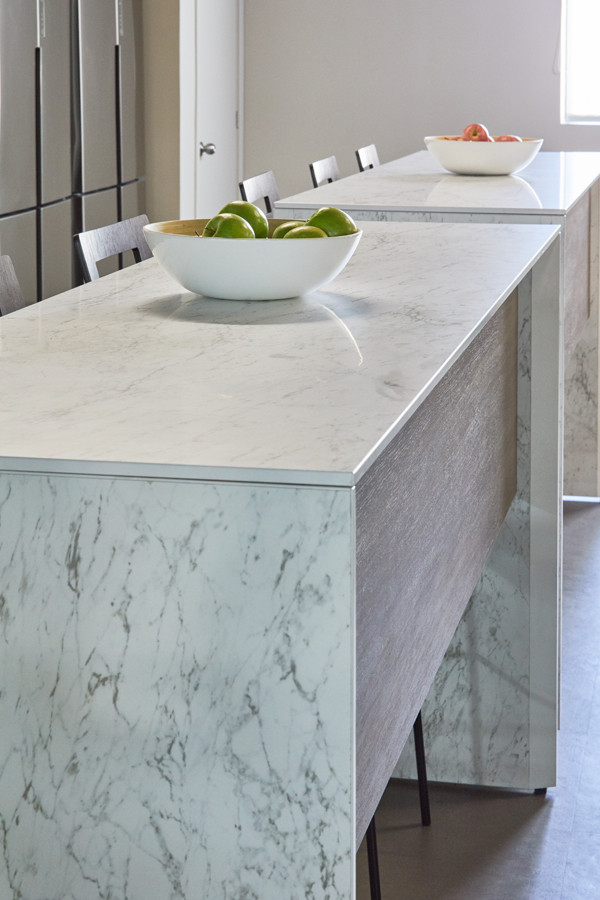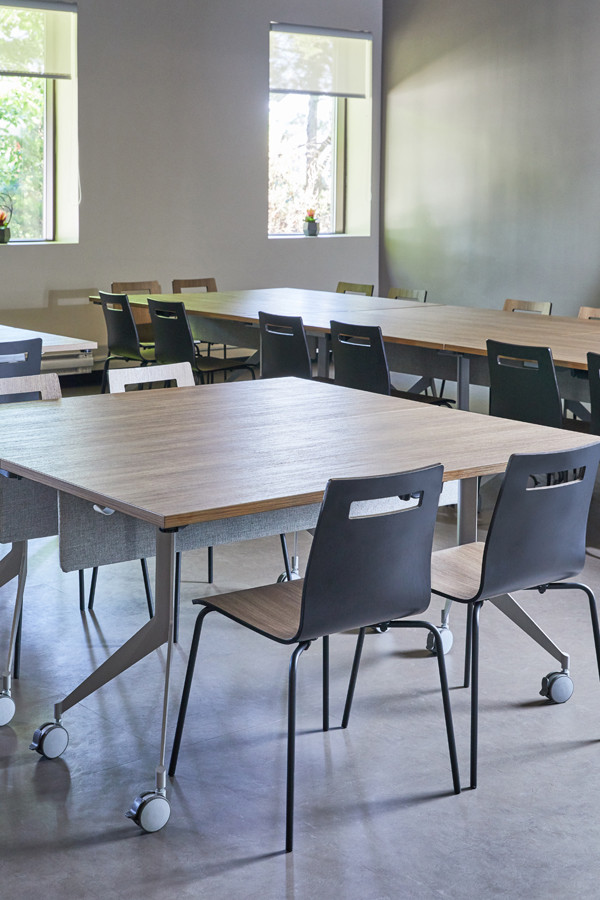Cross-Over Trends: Resimercial

Baroque Soapstone - P1017 VL & Uptown Urban Walnut - W474 LE
Love or hate the mash-up term, the influence of residential styling on commercial design is a long-cycle trend. The resimercial aesthetic has been definitive at furniture fairs for years—but it is increasingly relevant in other commercial segments such as healthcare, hospitality and education. The cultural and economic drivers of the trend suggest that it will continue to be a consistent design factor underlying more responsive design developments.
Resimercial is a neat concept to unpack. Blurring the lines lets designers out of the box of commercial spaces and encourages them to work in fresh ways. It also drives the supply side to bring new solutions to market that are both homey and durable. Part of what fuels the resimercial trend is how it builds off of collaborative problem-solving between specifiers and suppliers.
So where did resimercial design come from? How is it changing commercial environments?
A Brief History
Early attribution goes to millennials and Gen Z. These digital natives grew up in a time of unprecedented access to information. For them, work can happen anywhere, anytime due to technology. They have rich online social connections that foster self-expression through personal branding, yet a majority of face-to-face socialization takes place at work. Young professionals entering the workplace—often in tech-based and emerging industries—put in long hours and perform varied tasks throughout the day. They don’t have a strongly attached home identity or traditional work flow. Anecdotal evidence suggests this is where the trend of making the workspace/commercial space a comfortable extension of a home environment began.
Over the past couple of years research has shown there are real benefits to resimercial design- both for employees and employers. Also, those benefits are relevant to today’s culture, not a specific generation. They help people of all ages. Companies that intentionally create a lifestyle help employees manage a better work/life balance in today’s “always on” environment. It aids in attracting and retaining quality people and increases wellness. A comfortable, nurturing and flexible space provides employees an incentive to come into the office rather than telecommute.

Carrara Venato - P1015 UL & Downtown Urban Walnut W475 LE

Downtown Urban Walnut - W475 LE (table top and seat front) Black - S405 (seat back)
Resimercial Design Considerations
In simple terms, resimercial applies the comforts of residential spaces to the necessary functions of commercial environments. The following general interpretations are good guidelines, but the concept is unique to each space and occupant.
-
The living room – An area where people gather and entertain. These spaces are welcoming with natural light and comfortable seating that invites brainstorming. The living room showcases the corporate lifestyle and personal brand. It serves creative and collaborative tasks.
-
The study – Creating spaces that allow for privacy and quiet, like cozy work pods, gives people sanctuaries to concentrate or rest. Warm finishes, adjustable lighting and cozy furniture that may be configured to an individual’s preferences are found in the study.
-
The kitchen/dining room – Cafes and pantries are replacing industrial cafeterias, complete with relaxed seating options that encourage people to refresh and reconnect. The classic “heart of the home.”
-
The game room – Areas that offer employees a much-needed space to relax and de-stress boost productivity and foster teamwork.
-
Organization – Similar to the residential trend, closets and storage units have become more attractive and functional. Integrated lighting and high-end finishes give occupants places to keep personal belongings, creating a sense of home.
Resimercial design typically implements natural light, colorful textiles that define cultural identity and biophilic finishes. While these elements are homey, they have to be able to go to work.
At Arborite our HPL is engineered to carry the look and feel of natural woodgrains and stone while being durable enough to withstand the traffic and necessary maintenance of a commercial space. We study trends and complementary materials to develop designs that work well within a comprehensive palette. Our recently launched collection of six cross-over stone designs gives specifiers solutions for natural-feeling furniture and fixtures that don’t compete with other elements. For more information or samples please contact info@arborite.com or your local rep.

Carrara Venato - P1015 UL & Downtown Urban Walnut - W475 LE

Sign In
Create New Account